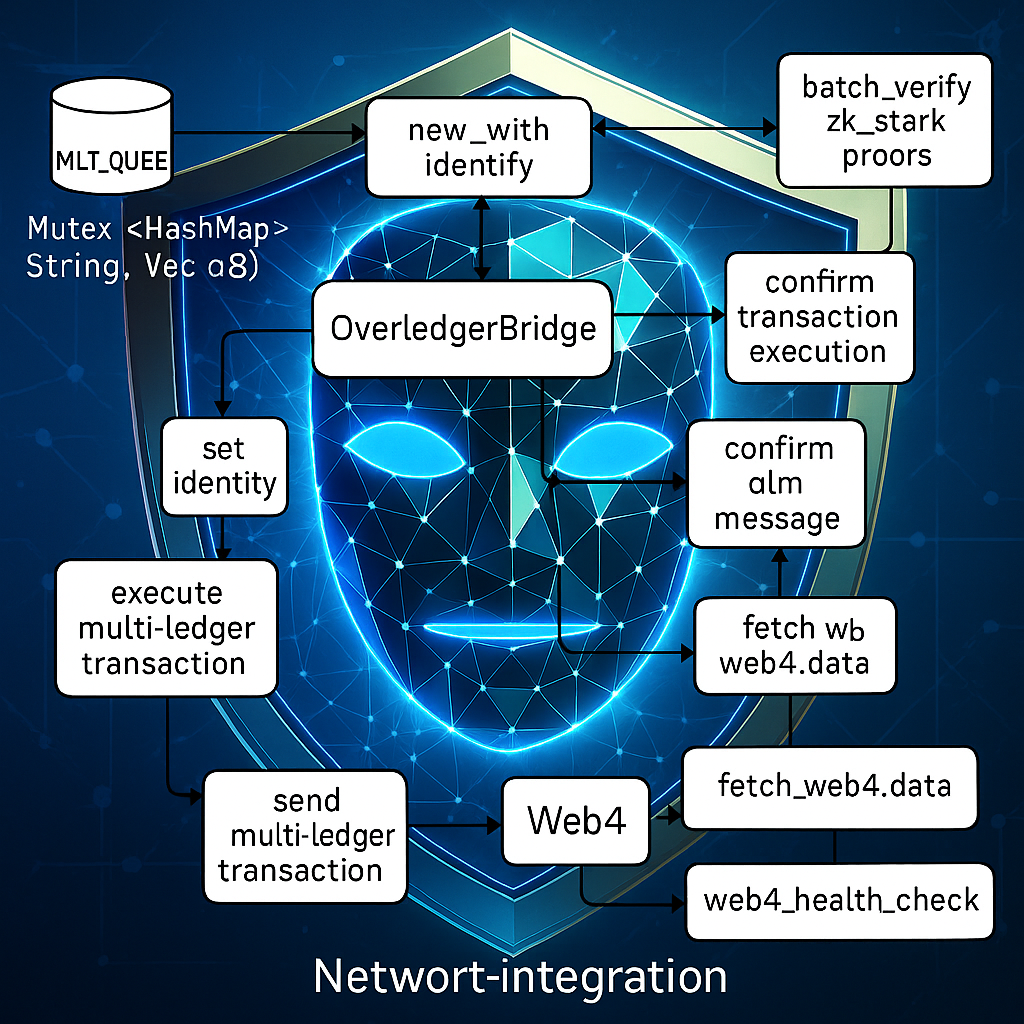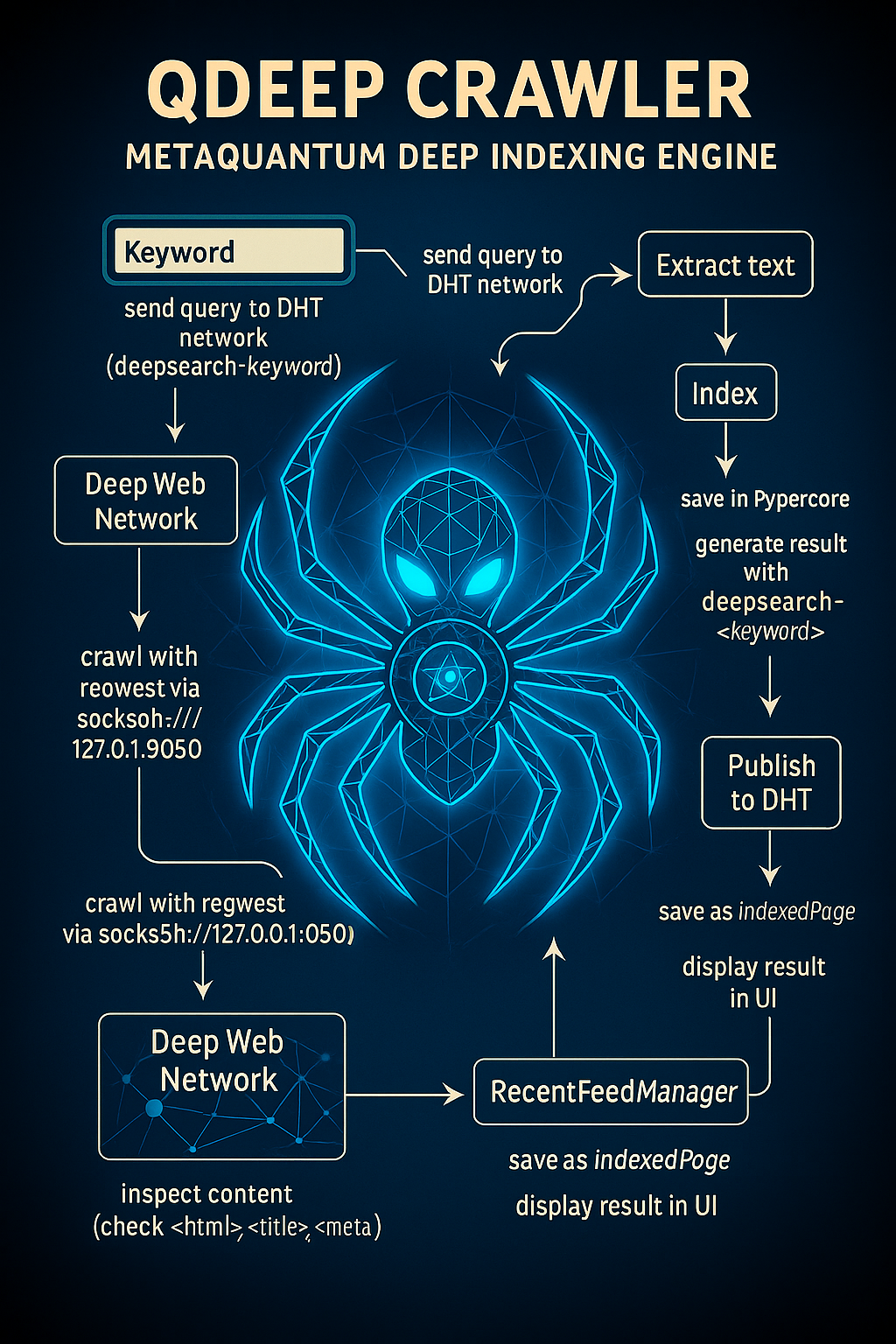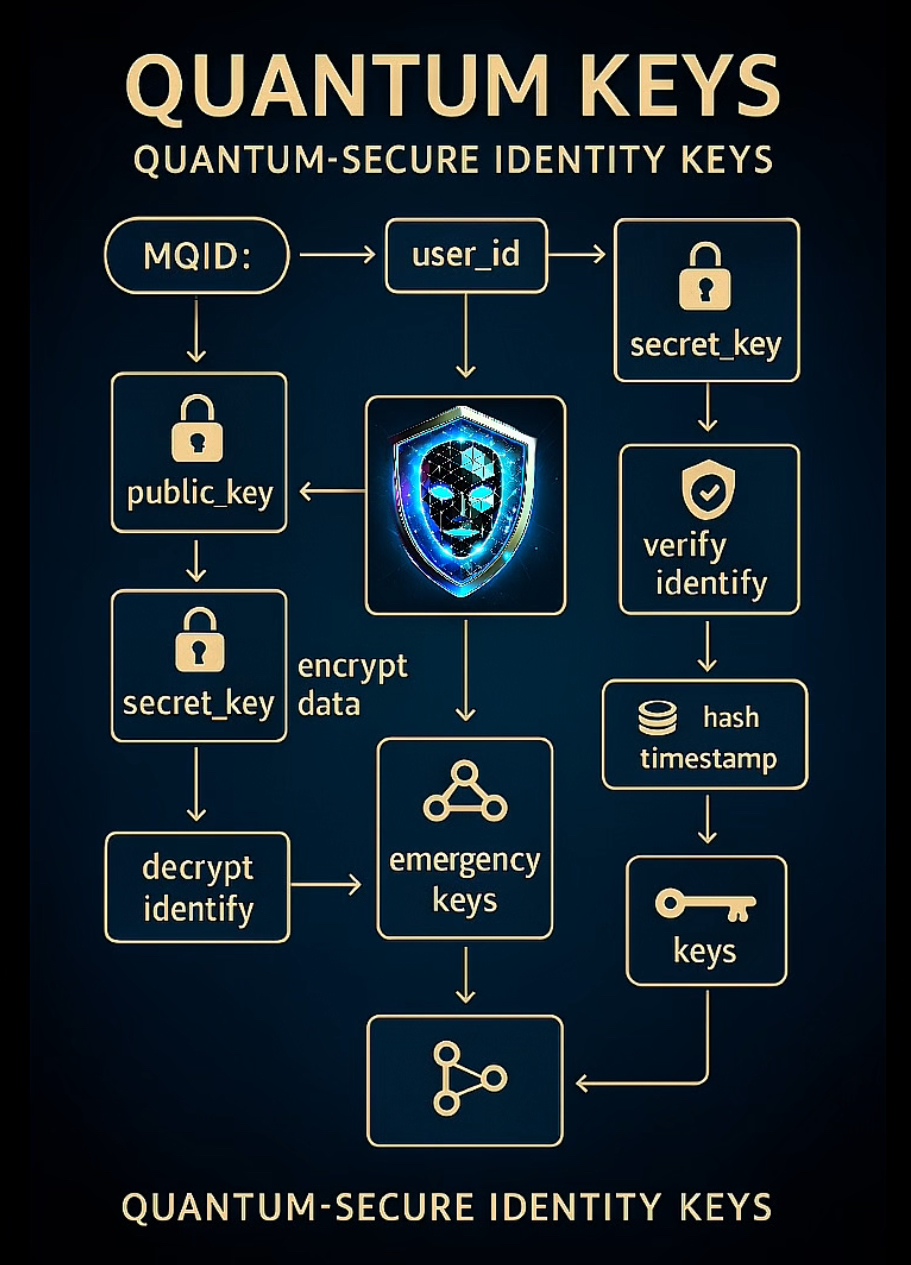Overview
MetaQuantum is a decentralized, quantum‑resilient network designed for secure identity, data, and communication. It blends post‑quantum cryptography, modular layers (L0/L1/L2), and a cohesive WebOS UX.

Architecture
Layer 0
RecentFeed, indexing, and discovery with DHT (Kademlia) and Hypercore for append‑only logs.
Layer 1
Consensus and ledger operations with burn rules and MQPY transfer/mint routing.
Layer 2
High‑throughput operations and app‑level protocols with off‑chain proofs (e.g., ZK‑STARK integrations).
Protocols (MQP)
MetaQuantum Protocol (MQP) provides signed messages for mint/transfer/burn, gateway requests, and secure routing. Gateways add ML‑driven DDoS detection and IP reputation to protect public endpoints.

MQPY Economy
MQPY is the protocol currency with epoch‑based inflation, automatic distribution across staking, governance, dev, and rewards, plus configurable burn rules. Private transactions can be validated with ZK‑STARKs.
Live Metrics
- Price: —
- Market Cap: —
- Total Supply: —
Users
Current user count across the network:
Apps
QMail
Post‑quantum encrypted mail over IPFS/Tor with dual confirmation and optional expiry.
QMask
Quantum identity wallet, trusted devices, and emergency recovery; deep MQPY integration.

QDeep
Autonomous crawler indexing .onion and ipfs:// into Layer0 with validation and secure storage.

Security
QuantumKeys
Kyber1024 identities with secure encapsulation, integrity checks, and emergency key rotation.

Trusted Devices
Device binding and verification to enforce access from known, authorized hardware.

Transport: HTTPS on 443 with SNI; HTTP on 80 redirects to TLS. DDoS screening via gateways before hitting app endpoints.
APIs
Identity & Sessions
POST /quantum_register,POST /quantum_login,POST /logout,POST /recoverPOST /api/authorize_device,GET /trusted_devices/{user}
Security
POST /force_regenerate_emergency_key_endpointGET /get_emergency_key_status_endpoint/{user},GET /get_emergency_key_value_endpoint/{user}
MQPY
GET /api/mqpy/stats,GET /mqpy/total_supply,GET /mqpy/fees_configPOST /stake_mqpy,POST /unstake_mqpy,GET /get_balance/{user},GET /get_membership_level/{user}GET /mqpy/inflation_status,POST /mqpy/inflation,POST /run_inflation,POST /mqpy/distribute_rewards
QMail
POST /send_qmailGET /fetch_qmail/{user_id},GET /fetch_sent_qmail/{user_id}POST /read_qmail,POST /confirm_read,POST /delete_qmail
Comms
GET /qcom_ws(WebSocket)POST /stream/(audio|video)/(send|receive),POST /call/(offer|answer)
Gateways
POST /api/gateways/register,GET /api/gateways/list,GET /api/gateways/statusPOST /api/transfer,POST /rpc,POST /api/qmask/(usd|withdraw_usd)
Market & Shop
GET /market/{symbol},POST /market/add_liquidity/qshop/*catalogue, analytics, reviews, purchase
AI
GET /api/ai/ask,GET /api/tts
Meta
GET /api/stats/users,GET /api/genesis_info,GET /healthz
Getting Started
- Create your Quantum ID with QMask inside WebOS.
- Explore apps (QMail, QTrade, QCom) and connect trusted devices.
- Use MQPY APIs and gateways for transfers, staking, and governance.
